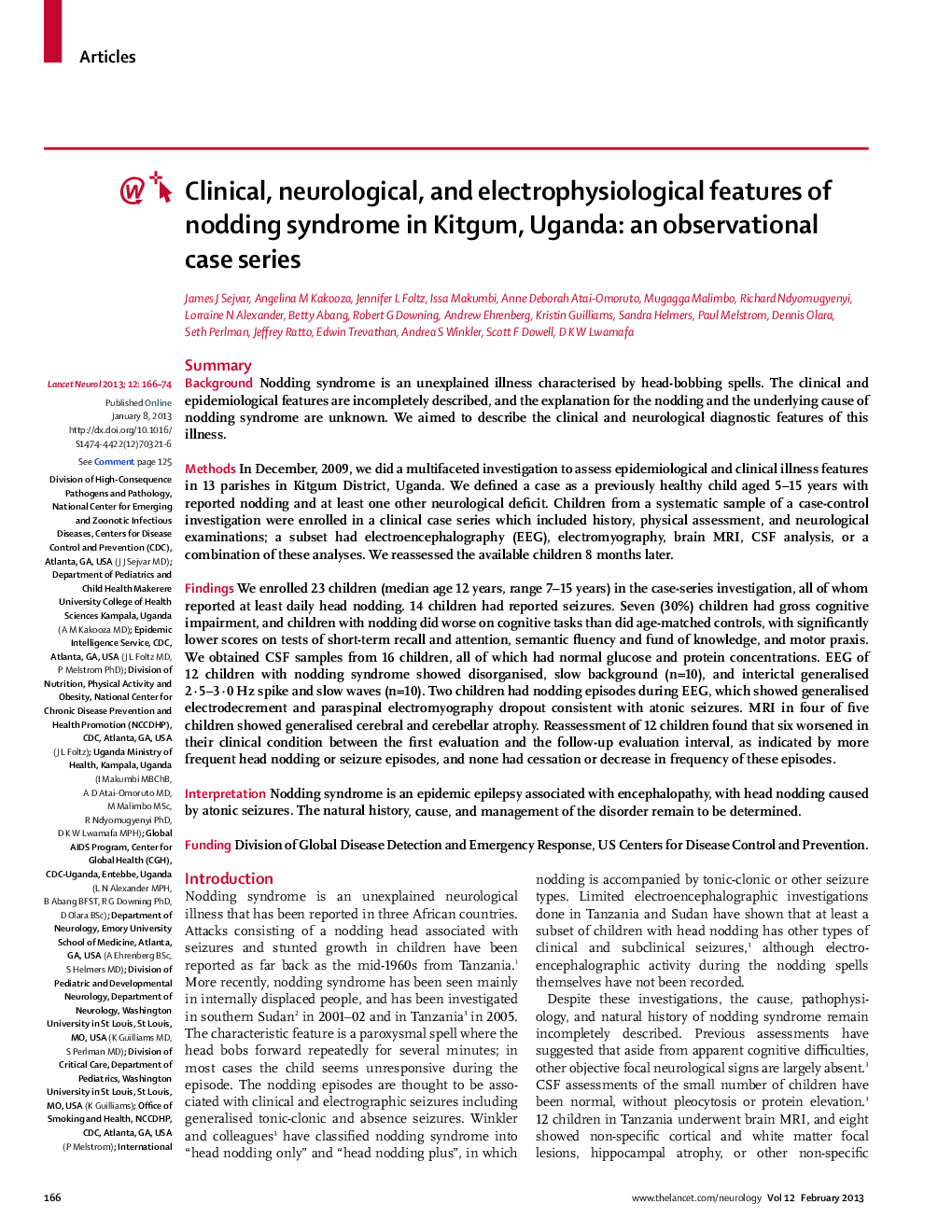| کد مقاله | کد نشریه | سال انتشار | مقاله انگلیسی | نسخه تمام متن |
|---|---|---|---|---|
| 3066484 | 1188077 | 2013 | 9 صفحه PDF | دانلود رایگان |

SummaryBackgroundNodding syndrome is an unexplained illness characterised by head-bobbing spells. The clinical and epidemiological features are incompletely described, and the explanation for the nodding and the underlying cause of nodding syndrome are unknown. We aimed to describe the clinical and neurological diagnostic features of this illness.MethodsIn December, 2009, we did a multifaceted investigation to assess epidemiological and clinical illness features in 13 parishes in Kitgum District, Uganda. We defined a case as a previously healthy child aged 5–15 years with reported nodding and at least one other neurological deficit. Children from a systematic sample of a case-control investigation were enrolled in a clinical case series which included history, physical assessment, and neurological examinations; a subset had electroencephalography (EEG), electromyography, brain MRI, CSF analysis, or a combination of these analyses. We reassessed the available children 8 months later.FindingsWe enrolled 23 children (median age 12 years, range 7–15 years) in the case-series investigation, all of whom reported at least daily head nodding. 14 children had reported seizures. Seven (30%) children had gross cognitive impairment, and children with nodding did worse on cognitive tasks than did age-matched controls, with significantly lower scores on tests of short-term recall and attention, semantic fluency and fund of knowledge, and motor praxis. We obtained CSF samples from 16 children, all of which had normal glucose and protein concentrations. EEG of 12 children with nodding syndrome showed disorganised, slow background (n=10), and interictal generalised 2·5–3·0 Hz spike and slow waves (n=10). Two children had nodding episodes during EEG, which showed generalised electrodecrement and paraspinal electromyography dropout consistent with atonic seizures. MRI in four of five children showed generalised cerebral and cerebellar atrophy. Reassessment of 12 children found that six worsened in their clinical condition between the first evaluation and the follow-up evaluation interval, as indicated by more frequent head nodding or seizure episodes, and none had cessation or decrease in frequency of these episodes.InterpretationNodding syndrome is an epidemic epilepsy associated with encephalopathy, with head nodding caused by atonic seizures. The natural history, cause, and management of the disorder remain to be determined.FundingDivision of Global Disease Detection and Emergency Response, US Centers for Disease Control and Prevention.
Journal: - Volume 12, Issue 2, February 2013, Pages 166–174